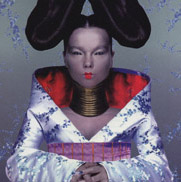
ISIS Recoding Life Project
 
IAS Fellowship
deCODE Comments
Open Reading Frames
ISIS Publications
Links
Contact us
Search
Projects Overview
MilWaste Program
Amazon Project
Quantum Physics
Seminars
Science Dialogue
Recoding Life
ISIS Fellows
Open Reading Frames: The Genome and the Media - Mike Fortun - Page 6
|
One of my jobs as historian and anthropologist of science is to trace out the specific details of how a free press actually operates, and what gets qualified as debate. Full disclosure: I am not one of the approximately 283,000 people in the world who speak and read Icelandic. But I have been interviewed numerous times by Icelandic journalists and so became part of the debate, and learned a thing or two about the Icelandic media in the process. This article, titled "The debate comes too late," appeared in the second largest of the Icelandic newspapers in September 1998. It was written by an art historian home for the summer, earning some extra cash. That's one small sign of the weak tradition of science reporting in Iceland. Journalists there are just now inventing the genre of in-depth science reporting on complex issues of a complex science and its complex social implications. In addition, I had many radio and print journalists telling me stories off the record about having been screamed at by Stefansson or sometimes threatened with a law suit if they said or wrote anything that departed from the company line. (I've gotten similar stories from a number of U.S.-based journalists as well.) In general, the vast majority of those hundreds of media accounts that are cited as evidence of a democratic debate in Iceland were little more than dressed-up deCODE press releases issued on a regular basis, passing on messages about jobs for Icelanders, predictions of wealth in the national coffers, and pieties about how Iceland would contribute to the improvement of world health and the universal progress of biomedical research. The major daily newspaper Morgunbladid is perhaps the worst offender in this regard, but another small marker would be the fact that the former vice president of news for the Icelandic national television station 2, Pall Magnusson, is now director of communications for deCODE. I'll come back to the Icelandic media in a bit, but let's turn briefly to the international press, which will also bring us back to the question of Iceland's isolation and the genetic homogeneity that is supposed to be associated with it. he homogeneity or purity of the Icelandic population was never so much a question as it was simply assumed to be true, on the basis of some mythic understanding reinforced by deCODE press releases. 
The headlines and soundbites here from the international press indicate the prevalence and power of this assumption, summed up most strikingly in this cover from Mother Jones that purports to be critical of the Icelandic-deCODE project even as it uncritically repeats its most tendentious and exoticist claim: Iceland is a nation of blonde-haired, blue-eyed babes. And, presumably, hunks.  Now what continues to puzzle me is why this reading frame was never opened up by reading it against another quasi-mythic image so readily available in pop culture. Bjork, Iceland's other famous media-hyped personality, may not be Richard Wagner, but she certainly has sold a lot of records, including 1997's Homogenic and its utter and complete ironization of the pure, natural, homogenic Icelander. Why didn't a single journalist, anywhere, ever even flip through their collection of CDs or People magazines and just simply ask the opening question: what's up here? How do we know what the characteristics of the "typical Icelander" are? It's a question that can be approached via more rigorous avenues than those of pop music - although it's also a question that can't be fully settled. In contrast to deCODE's homgeneity claim, through an analysis of both mitchondrial DNA and a genome-wide set of 300 microsatellite markers, Einar Arnason and 2 other Icelandic population geneticists have argued in Nature Genetics that, in comparison to other Scandinavian and European populations, Icleand is among the most heterogenous - surpassed only by Spain and Turkey in some measures of genetic difference. At best, the most one can now say is that the homogeneity or heterogeneity of the Icelandic population as a whole remains a matter of scientific dispute and questioning. One danger of presuming a greater degree of homogeneity than may actually exist in Iceland is, as Joseph Terwilliger and Kenneth Weiss argue in a recent Current Opinions in Biotechnology, an increased number of false positives in gene discovery experiments. It's also a good question as to what difference the degree of genetic difference in a population makes when it comes to genomics-based gene discovery projects applied to entire populations. Estonia, for example, now argues that its more heterogenous population will not only serve as a better platform for gene discovery, but because it represents the actual heterogeneity of Caucasian populations better than Iceland does, it serves as a better proving ground for the testing, marketing, and sales of future pharmacogenomics-based drugs. |